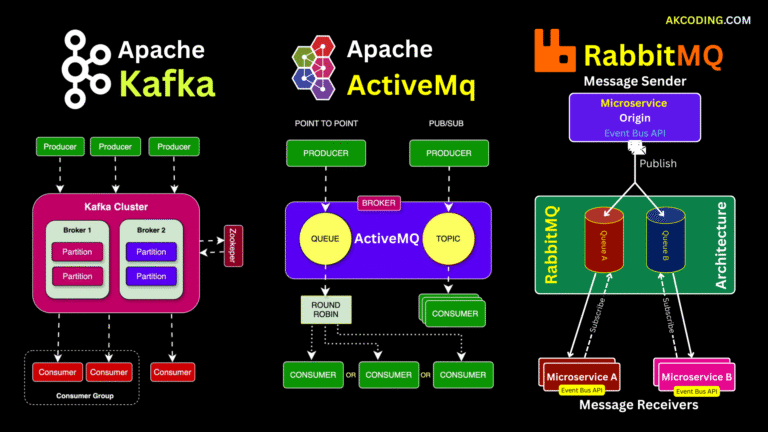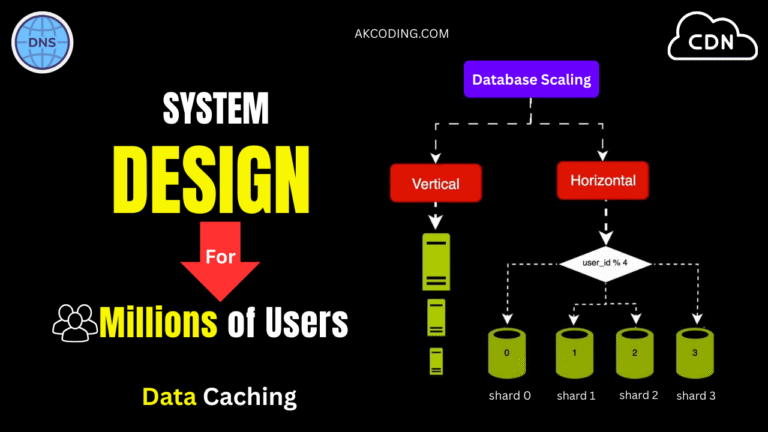When it comes to searching for an element in a dataset, the two most common algorithms are Linear Search and Binary Search. While both aim to locate a target element, they operate in vastly different ways, making each suitable for specific scenarios. Let’s dive into their differences and help you understand when to use each.
Difference between linear search and binary search
Table of Contents
Linear Search
Linear Search is a straightforward approach where you traverse through each element of a dataset until the target element is found or the end of the dataset is reached.
Key Characteristics of Linear Search
- Data Requirement: Works on both sorted and unsorted data.
- Time Complexity:
- Best Case: O(1) (if the target is the first element).
- Worst Case: O(n) (if the target is the last element or not present).
- Space Complexity: O(1), as it doesn’t require extra memory.
- Use Case: Ideal for small datasets or when the data is unsorted.
Example of Linear Search
Here’s a simple implementation of linear search in Python:
# Linear Search Function
def linear_search(arr, target):
for i in range(len(arr)):
if arr[i] == target:
return i
return -1
# Example Usage
array = [4, 2, 5, 1, 3]
result = linear_search(array, 5)
print("Element found at index:" if result != -1 else "Element not found.")
//Difference between linear search and binary searchBinary Search
Binary Search is a more advanced algorithm that works by dividing the dataset into halves repeatedly, narrowing down the search area with each step.
Key Characteristics of Binary Search
- Data Requirement: Requires the dataset to be sorted.
- Time Complexity:
- Best Case: O(1) (if the target is the middle element).
- Worst Case: O(log n) (as the search area is halved in each step).
- Space Complexity: O(1) for iterative implementation.
- Use Case: Perfect for large datasets that are sorted.
Example of Binary Search
Here’s a simple implementation of binary search in Python:
# Binary Search Function
def binary_search(arr, target):
start, end = 0, len(arr) - 1
while start <= end:
mid = (start + end) // 2
if arr[mid] == target:
return mid
elif arr[mid] < target:
start = mid + 1
else:
end = mid - 1
return -1
# Example Usage
array = [1, 2, 3, 4, 5]
result = binary_search(array, 5)
print("Element found at index:" if result != -1 else "Element not found.")
//Difference between linear search and binary searchDifferences Between Linear Search and Binary Search
| Aspect | Linear Search | Binary Search |
|---|---|---|
| Definition | Checks each element sequentially until the target is found. | Divides the dataset in halves repeatedly to find the target. |
| Data Requirement | Can work on both sorted and unsorted data. | Requires data to be sorted beforehand. |
| Time Complexity | – Best Case: O(1) (target is the first element). | – Best Case: O(1) (target is the middle element). |
| – Worst Case: O(n) (target is the last element or not present). | – Worst Case: O(log n) (target is far from the middle). | |
| Space Complexity | O(1) (no additional space required). | O(1) (no additional space required in iterative approach). |
| Algorithm Type | Sequential search. | Divide-and-conquer search. |
| Efficiency | Less efficient for large data sets. | Highly efficient for large data sets, provided the data is sorted. |
| Ease of Implementation | Simple and easy to implement. | Slightly more complex due to the need for data to be sorted and mid-point calculations. |
| Applicability | Useful when the data is small or unsorted. | Ideal for large, sorted data sets. |
| Use Cases | – Searching an item in a list of unsorted items. | – Searching for a record in sorted databases or large ordered datasets. |
Conclusion
Both Linear Search and Binary Search are fundamental searching algorithms that every programmer should know. If your dataset is unsorted or small, Linear Search is a quick and simple solution. However, if you’re working with large, sorted datasets, Binary Search is the clear winner due to its efficiency.
Understanding the strengths and limitations of these algorithms will help you choose the right one for your specific use case. Happy coding!

Read other awesome articles in Medium.com or in akcoding’s posts.
OR
Join us on YouTube Channel
OR Scan the QR Code to Directly open the Channel 👉




